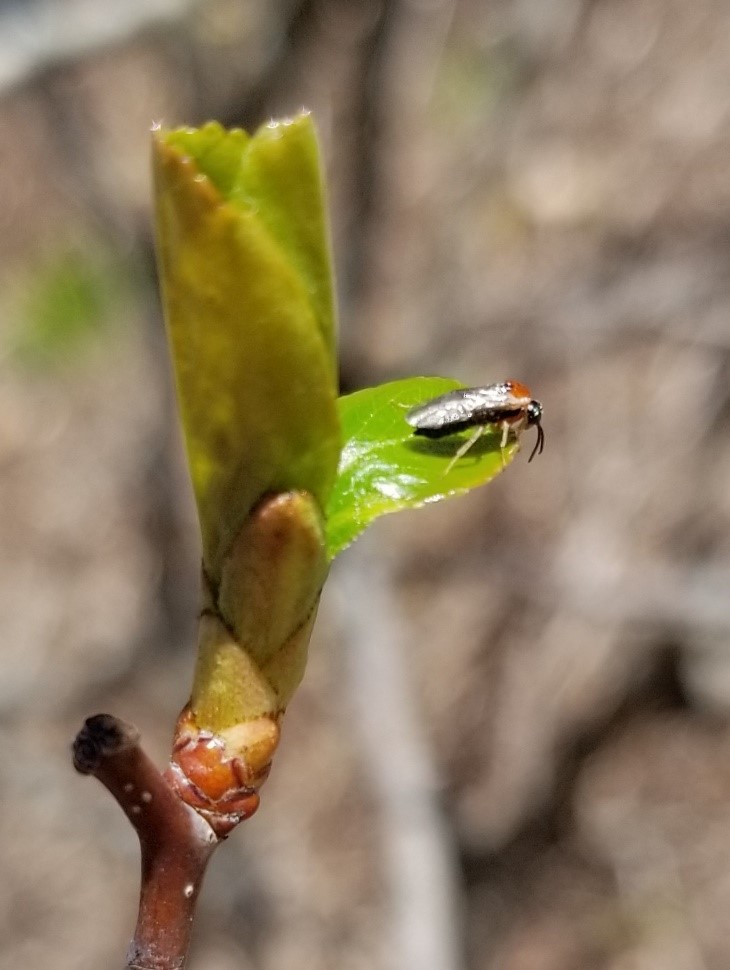Issue 1, April 29, 2019
Hawthorn leafminer
Hawthorn leafminer (Profenusa canadensis) are small sawfly larvae that feed between the epidermal layers of the leaf, on the parenchyma cells, leaving small discolored tunnels behind them. The areas on the leaf where tunneling has occurred eventually become brown patches. The adults are small black sawflies about 3 mm long. One of the major characteristics used to differentiate sawfly adults from other wasps can be seen when you examine the body where the thorax and abdomen meet. Many wasps have a slender “waist” that connects the thorax and abdomen, but sawflies lack this slender waist and it can be difficult to see where the thorax ends and the abdomen begins.
The adults are present when leaves are unfolding so it is best to scout for adults early in the season. At this time females will pierce the epidermal layer of the leave and deposit one egg inside young leaves. When the larvae hatch with will begin feeding under the surface of the leaves which can cause significant aesthetic damage to landscape plants though it does not usually impact plant health.

Hawthorn leafminer (Profenusa canadensis) taken in Urbana, IL 4/15/19. Photo by Sarah Hughson, University of Illinois at Urbana-Champaign.
Since this leafminer’s damage is predominately aesthetic and tree health is not impacted, treatment usually is not warranted. If heavy damage was experienced during the previous year, foliar sprays can be applied to prevent similar damage the following year. Foliar sprays can be used early in the season before tunneling damage appears on the leaves. The timing of larval hatch and spray applications to hawthorn may coincide with blooming in Spirea X vanhouttei, Lonicrea korolkowi ‘Zabelii’ and Cornus alternifolia.
Hawthorn leafminers usually attack Cratagus crusgallis, C. erecta and C. persimillis. Planting less susceptible hawthorn varieties when possible is an effective cultural control in areas where this insect is more prevalent, such as northern Illinois.
Author:
Sarah Hughson